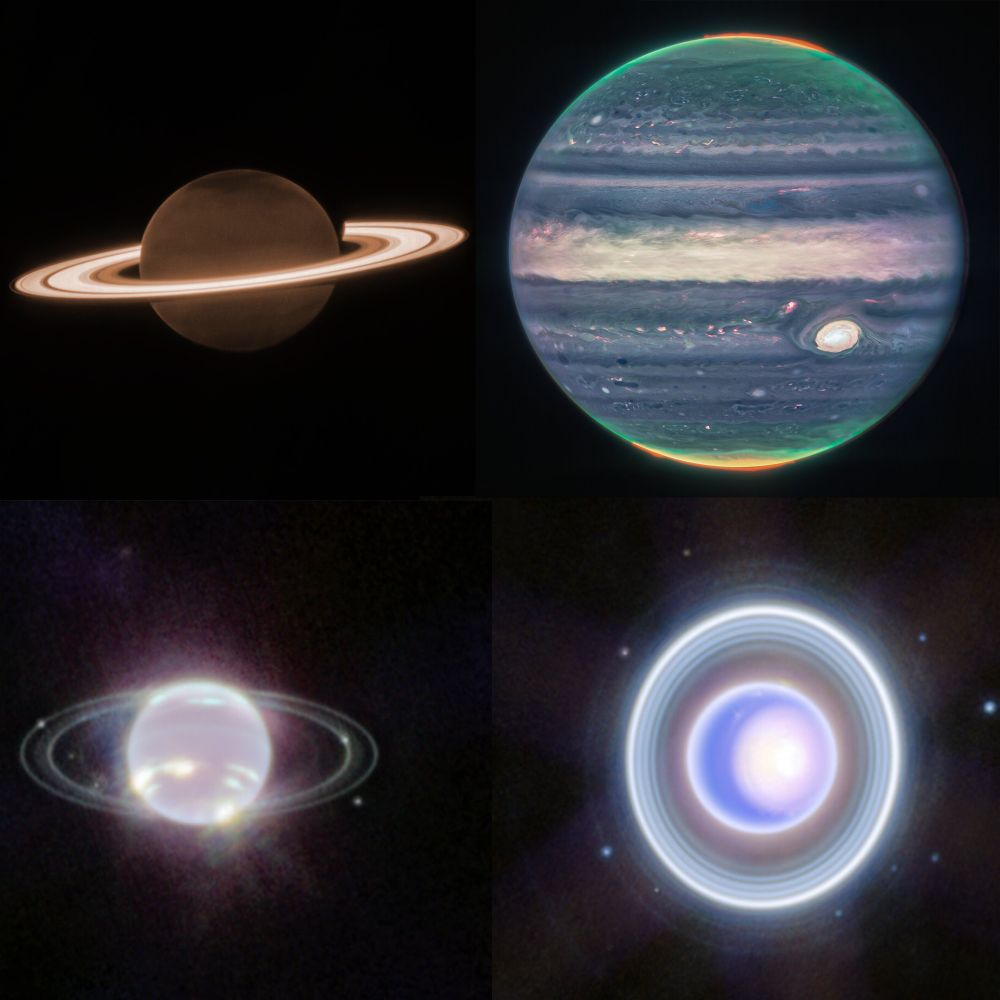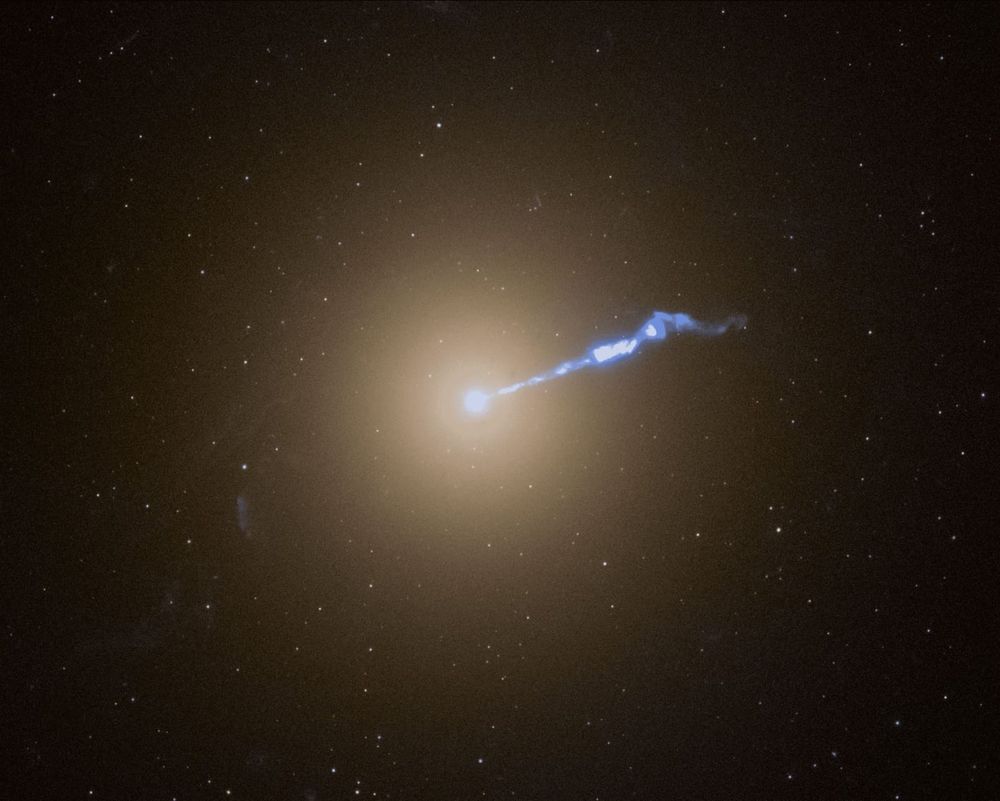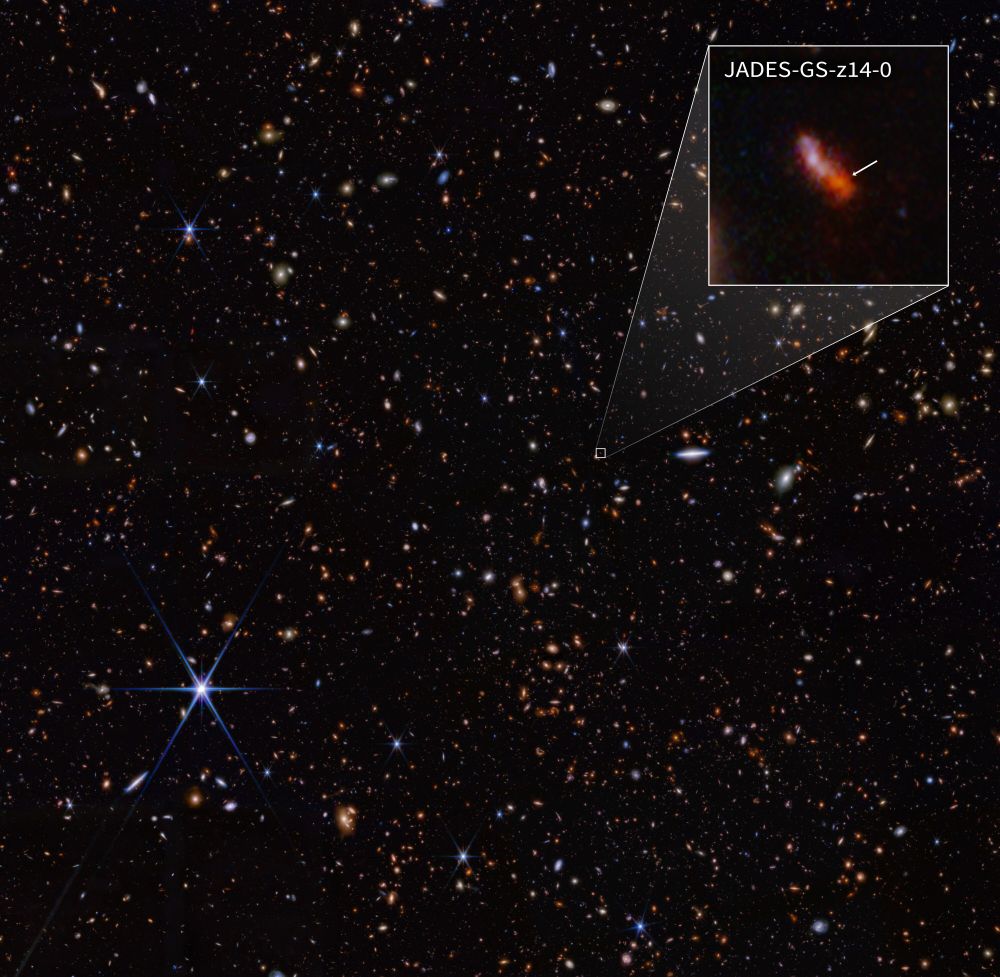
Added an additional 9 hours to the 10 I took around this time last year. The Christmas Tree Cluster, Cone Nebula and Fox Fur Nebula make up the NGC 2264 region located in the constellation Monoceros.
#astro #astronomy #astrophotography #photography #science #space #christmastree
30.01.2025 18:36 — 👍 1465 🔁 95 💬 23 📌 4

Black and white photo of a shorthaired tabby kitten appearing to burst through a sheet of white paper in a dark frame. Text at the bottom reads “sauve qui peut”.
“Sauve qui peut”. This is a French phrase that translates to something like “run for your life!” or “every man for himself!”, indicating a chaotic or dangerous situation. Postcard from my collection, no date/info.
27.01.2025 18:49 — 👍 4806 🔁 609 💬 28 📌 16

Credit: https://www.shutterstock.com/g/jimcumming/sets
Happy :3
Jim Cumming 📸
#Wolf #Wolves #Animals
20.11.2024 10:03 — 👍 5894 🔁 399 💬 54 📌 27

The James Webb Space Telescope has captured stunning images of the gas giants in our solar system. The images show Saturn with its intricate rings, Jupiter with its swirling storms and bands, Uranus with its tilted rings and hazy atmosphere, and Neptune with its faint rings and dynamic weather patterns. These images reveal the beauty and complexity of these distant worlds and offer new insights into their formation and evolution.
JWST images of all four gas giants in our Solar System.
🔭 🧪
20.11.2024 19:21 — 👍 2545 🔁 359 💬 35 📌 22

Uni…are you really a cat?
本当に猫?
20.11.2024 13:05 — 👍 22100 🔁 1788 💬 244 📌 62

Color photo of a fluffy grey cat sitting derpily in a bathroom sink. In the background you can see that the toilet cover is carpeted and there’s a matching dark pink throw rug on the floor.
I’m in ur sink, questioning ur decor choices. Photo from my collection, ca. 1960s.
19.11.2024 03:07 — 👍 14824 🔁 1428 💬 190 📌 59

Uni :3
15.11.2024 13:56 — 👍 7919 🔁 1026 💬 57 📌 23

Black hole shoots a plasma beam through space. Captured by NASA
15.11.2024 14:19 — 👍 20256 🔁 1209 💬 301 📌 137
so cool !!!
15.11.2024 07:56 — 👍 1 🔁 0 💬 0 📌 0

The planet Uranus on a black background. The planet appears blue with a large, white patch taking up the right half. The patch is whitest at the centre, then fades into blue as it expands from right to left. A thin outline of Uranus is also white. Around the planet is a system of nested rings. The outermost ring is the brightest while the innermost ring is the faintest. Unlike Saturn’s horizontal rings, the rings of Uranus are vertical and so they appear to surround the planet in an oval shape. There are 9 blueish white dots scattered around the rings.
High resolution image of a planet 3 billion km away and its rings.
Uranus by JWST.
🔭 🧪
14.11.2024 20:38 — 👍 24124 🔁 1312 💬 256 📌 133

いたずらっ子つかまえた〜🐾
06.11.2024 06:04 — 👍 34 🔁 12 💬 0 📌 0

Uni is taking a nap :3
お昼寝中です
12.11.2024 13:32 — 👍 5075 🔁 1201 💬 24 📌 15

The background of space is black. Thousands of galaxies appear all across the view. Their shapes and colors vary. Some are various shades of orange, others are white. Most stars appear blue, and are sometimes as large as more distant galaxies that appear next to them. A very bright star is just above and left of center. It has eight bright blue, long diffraction spikes. Between 4 o’clock and 6 o’clock in its spikes are several very bright galaxies. A group of three are in the middle, and two are closer to 4 o’clock. These galaxies are part of the galaxy cluster SMACS 0723, and they are warping the appearances of galaxies seen around them. Long orange arcs appear at left and right toward the center.

A massive cloud of gas and dust is seen in dark, dusty red, with its outer portions a translucent, ethereal gray. Several stars and distant galaxies are scattered throughout the image.

A circular-shaped nebula with a complex structure. On the circle’s exterior, particularly on the left side of the image, are curtains of material glowing orange like fire. Interior to this outer shell is a ring of mottled filaments in bright pink, studded with clumps and knots. A greenish loop extends from the upper right of the ring into the central cavity. Translucent wisps of blue, green, and red appear throughout the image.

The star cluster Pismis 24 lies within the much larger emission nebula called NGC 6357, located about 8,000 light-years from Earth. The cluster is seen here above a small portion of the nebula. The gas below the stars glows through ionization caused by intense ultraviolet radiation from the massive young stars within the cluster. The strong radiation and stellar winds from from these blazing, blue-white stars also pushes the nebular material outward, creating one of many low-density bubbles within NGC 6357.
once again thinking about the fact that this is all just OUT THERE and we can only see it through the eyes of telescopes
13.11.2024 18:45 — 👍 46101 🔁 3458 💬 478 📌 150

A field of thousands of small galaxies of various shapes and colors on the black background of space. A bright, foreground star with diffraction spikes is at lower left. Near the image center, a tiny white box outlines a region and two diagonal lines lead to a box in the upper right. Within the box is a banana-shaped blob that is blueish-red in one half and distinctly red in the other half. An arrow points to the redder portion and is labeled “JADES GS z 14 – 0”.
Most distant object known to humanity.
Found by JWST, JADES-GS-z14-0 is the most distant galaxy ever discovered. It's located 13.6 billion light years from us, and since it takes time for light to travel, we see it as it was only 290 million years after the Big Bang.
🔭 🧪
13.11.2024 20:09 — 👍 14399 🔁 815 💬 190 📌 80
24 year old freak in minneapolis
may joy reign over your journey
@stonehaarts on twt/insta ; knights + undead ; hsr & more~
she 1998 ☆ aftg, capri
ic: riceball_annie
https://x.com/honsools
Global organization fostering collaboration and information exchange to conserve #snowleopards and support communities sharing their habitat.
https://snowleopardnetwork.org/
YouTube man cursed to love roleplaying games and old clothes.
youtube.com/@LyleShnub
instagram.com/lyle.shnub
Welcome,this account is devoted high-quality image of space,sharing quality astrophotography science &Technology
Join my x page https://x.com/Earthwonders__/status/1984066212582801872?t=gkF8RDYsJuj9w95viDa5gg&s=19
Hi! I’m Molly Hodgdon. I live in Vermont with my beautiful FIV+ cats Fergus and Francie. Banner photo by W. Eugene Smith. Profile pic is a postcard from my collection mailed 1908.
Not a bot. Not selling anything. Just a keeper of forgotten cats.
#RILAKKUMA: I JUST CAN’T SAY GOODNIGHT
she/her, 24
動物のイラスト
のんびりお絵描きの修行中🐾
無断転載 使用は禁止ですよ
Uni, Minuet cat born on March 27, 2020🇯🇵
https://youni.store
James Webb - Everything That's Hot 🔥
jwstfeed.com
official Bluesky account (check username👆)
Bugs, feature requests, feedback: support@bsky.app















